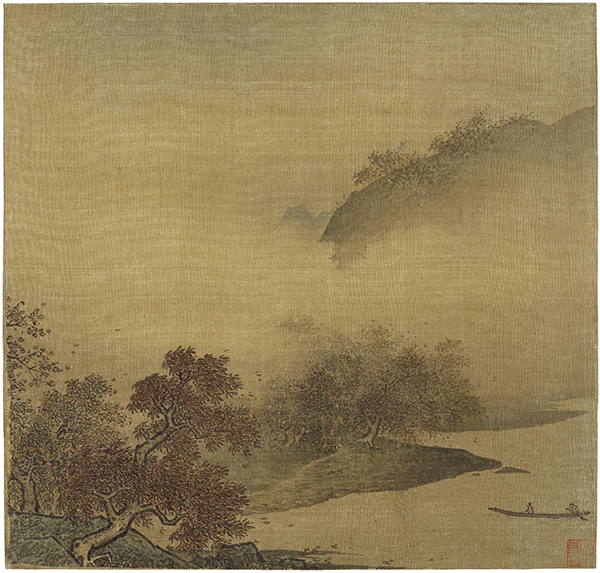Rethinking Classicism: Song Dynasty
My Rethinking Classicism series continues with landscapes of the Southern Song style. The early Song period (900s CE) witnessed the rise of a great school of landscape painting that endured as the measuring stick (another good synonym for “classicism”) for aesthetics of painting in China through to the present day. Landscape painting of the Song period achieved a complexity and subtlety in approach to nature in both its organization of space and representation of natural form that would not be seen in the West until the 1500s.
 |
| Song Dynasty, formerly attributed to Li Tang (1050–1130, China), Autumn Foliage Along a River, after 1150. Ink and color on silk, 10 ½" x 11" (26.7 x 28 cm). © 2020 Museum of Fine Arts Boston. (MFAB-643) |
The major formats of Chinese painting were well-established already in the Tang dynasty (618–907 CE). These formats continued through the Five Dynasties Period (ca. 907–960 CE) but were refined and expanded upon during the Song dynasty (960–1279). The Song dynasty is considered one of the most significant periods of cultural and artistic development in Chinese history. Southern Song painting refers to the period after the Mongols invaded China and the Song court fled south after 1127, ruling only the region south of the Yangtze River.
Li Tang was one of three artists who is thought to have pioneered the new lyrical style of landscape. The asymmetrical arrangement of elements and romantic mist to suggest distance are particularly southern in style, replacing the towering mountain landscapes of the Northern Song Monumental style. The use of mist to create a sense of space is the closest approximation in Chinese painting to the Western idea of atmospheric perspective, where the distinctness of forms diminishes toward the background of the work. The selective use of color is a holdover from Tang period landscapes, a favored touchstone for Southern Song painters.


Comments